Gold Coast development: Robina’s incredible rise from farmland to exclusive suburb
Plans to build a giant $400m ‘Taj Mahal’ development in a Gold Coast suburb dubbed the next “super city” sparked a furious battle over towers and the future of the region.
Central
Don't miss out on the headlines from Central. Followed categories will be added to My News.
DREAMS of Robina becoming an exclusive enclave for the rich and famous came to an end in the 2000s, as it took shape as the Gold Coast’s own mini “super city”.
It had undergone a major development boom and the population was increasing.
Robina was even earmarked as the home of “the Taj Mahal” – the controversial council super headquarters.
In the past fortnight the Bulletin has revisited the origins of Robina and the long journey from farmland in the 1960s, its 1981 purchase by Dr Robin Loh and Arthur Earle, and the early 1990s proposal to turn it into the Gold Coast’s official CBD.
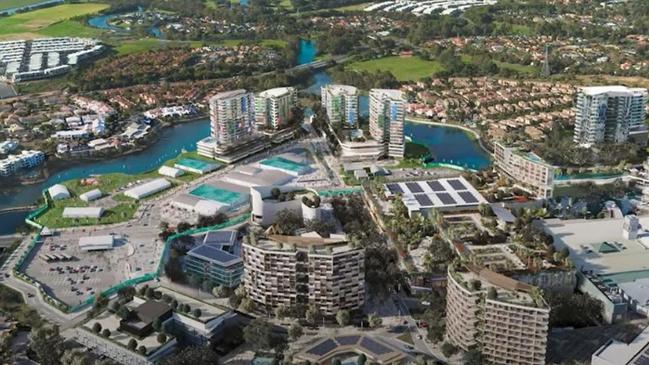
The 1990s brought dramatic growth as the railway was extended, Robina Town Centre opened and Bond University was forced to fight off a bizarre attempt by the Victorian government to poach it from Queensland.
By the mid-2000s, the suburb was on a major upswing – Robina Town Centre was in the midst of a $250m expansion and the suburb was selected as the home of the Gold Coast Titans NRL team and its stadium.
By 2007, The Rocket, Robina’s first high-rise was built at a cost of $80m.
With so much activity, the Gold Coast City Council under then-mayor Ron Clarke eyed off relocating to Robina and cement it as the city’s new CBD.
Council officers at the time pushed for city hall to abandon Evandale in favour of a 40-storey tower that would become its new centralised headquarters.
Council’s offices were spread between Evandale and the Nerang headquarters it had inherited from the Albert Shire in the mid-1990s.
While Southport was initially favoured, it was rapidly supplanted by Robina.
In late 2008, council voted to spend $400m on a headquarters at Robina.
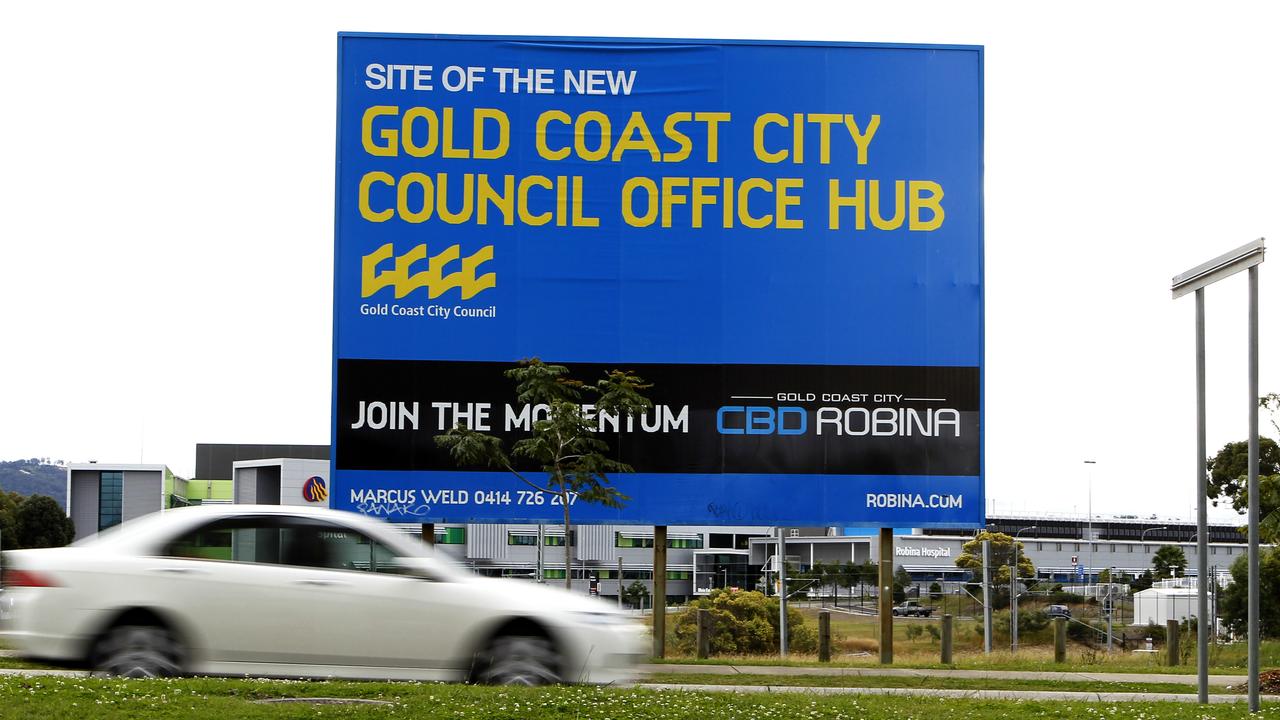
But the idea immediately became controversial when the global financial crisis kicked into high gear, and pressure on council to cut its costs.
Councillors spent most of 2008 and 2009 brawling over the future of the controversial project.
Robina Land Corporation offered the council free land to build a grandiose $375m centralised headquarters for the organisation’s 2000-plus staff.
By late 2009, Cr Peter Young led a proposal to abandon a single headquarters proposal and establish three headquarters – one at Athol Paterson carpark at Southport, a second at the Coomera Town Centre and a third at a greenfield site at Robina.
Construction was expected to begin by 2012.
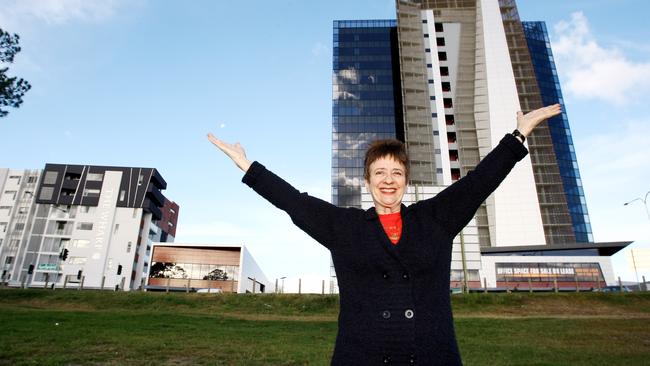
Then-Robina councillor Jan Grew said the return to Robina was inevitable but the wait had been trying.
“I remember talking about this 14 years ago and we still haven’t built anything yet,’’ she told the Bulletin at the time.
“It has been very frustrating, especially since we had land offered to us but we couldn’t get the votes to go ahead with it.
“Now we’re back to square one but it makes complete sense that the council chooses to have a strong presence in Robina.’’

Council bought the land from Robina Land Corporation in mid-2010 after negotiating the company down from a $15m price tag.
“It’s a vote of confidence for Robina,’’ said Robina Land Corporation director Tony Tippett.
“We did the deal at significantly below market price, probably around half the market value rate, but in the interests of getting council to Robina we were happy to do the deal.’’
The second decade of the new century was meant to be an exciting beginning for Robina, but it marked the end for its founder.
Dr Robin Loh died in August at age 81.

Dr Loh had retired in 1996 after Robina Town Centre’s completion and had been in ill health.
In his last years he battled Parkinson’s disease and related conditions before dying on a flight from Singapore to Hong Kong.
He was buried in the US alongside his parents.
Back in Australia, the battle for Robina raged on.
Despite the council buying a site for the headquarters, some councillors continued to lobby for a “Taj Mahal”.
It became a major political football leading into the 2012 mayoral election as critics declared it to be a waste of money and attacked the incumbents for having spent years arguing about it rather than focused on ratepayer issues.
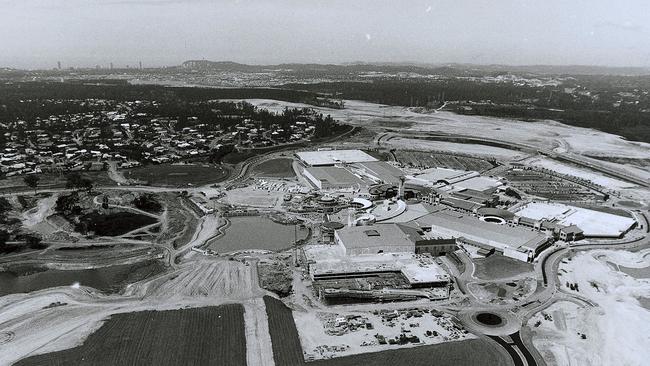
Tom Tate won the election and scrapped all the previous plans for headquarters and committed to keeping council based at Evandale.
The days of Robina as the third official CBD were over.
But thanks to the decades of work, Robina is now on track to host the new Olympic Games athletes village and the city’s biggest parklands.
Not a bad legacy at all.
The plan to turn exclusive suburb into a ‘super city’
JUST a few thousand people lived in Robina when it was dubbed a “super city”.
It was August 1993 when its future changed dramatically with the announcement that the suburb would be home not just to a giant shopping centre but to a sports and arts precinct, hotels and the centre of the Gold Coast.
Last week, the Bulletin revisited the origin of Robina and the long journey from farmland in the 1960s and its many owners through its 1981 purchase by Dr Robin Loh and Arthur Earle and the early 1990s proposal to turn it into the Gold Coast’s official CBD.

By 1993, housing was being built at a rapid pace and the cost of land was rising dramatically.
Dr Loh’s Robina Group entered talks with Premier Wayne Goss about realising the full extent of his dream.
Mr Goss, seeing an opportunity to push ahead with the extension of the Gold Coast’s railway line, got behind the plan and unveiled the proposed Robina Town Centre himself.
In making the redevelopment possible, Robina became one of only two Gold Coast suburbs – the other being Sanctuary Cove – to have its own Parliamentary Act, clearing red tape and allowing the work to be fast-tracked.
“The 420ha Robina Town Centre development will be about the size of Brisbane’s central business district,” News Corp reported at the time
“The town centre will have an entertainment centre with seating for about 7000 people.
The development will also have a high school, library, banks, post office, health and medical facilities, restaurants, hotels and motels.
“Executives of the Robina Group hope the development will become the ‘heart’ of the Gold Coast, which is now Australia’s seventh-largest city.”
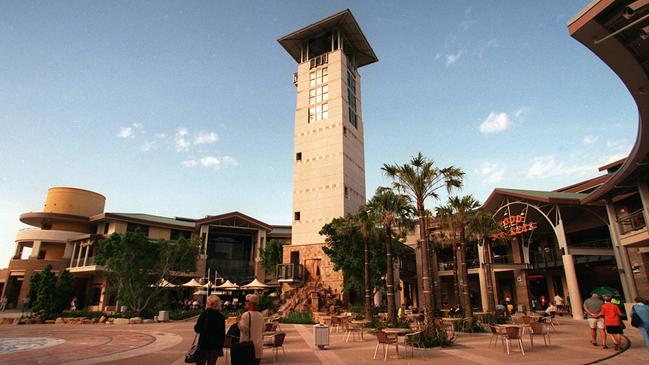
The Gold Coast Rollers National Basketball League (NBL) team, 75 per cent owned by the Robina Group, was expected to move to the centre from Carrara.
Many of these dreams failed to be realised. The Rollers never relocated before the team exited the NBL in 1996, facing financial problems, while the giant entertainment centre and multiple hotels were never built.
However, Robina would become home to the Gold Coast Titans National Rugby League team and Cbus Super Stadium, something which could not have been foreseen in the early 1990s.
At the time, Mr Goss said the Robina Group’s plans had been strengthened by the decision to site the Brisbane-Gold Coast rail terminal at Robina.
“In turn, the centre is of strategic importance to the Queensland government because it will serve as the catalyst for establishment of a hospital, schools and other public and private infrastructure,’’ he said.
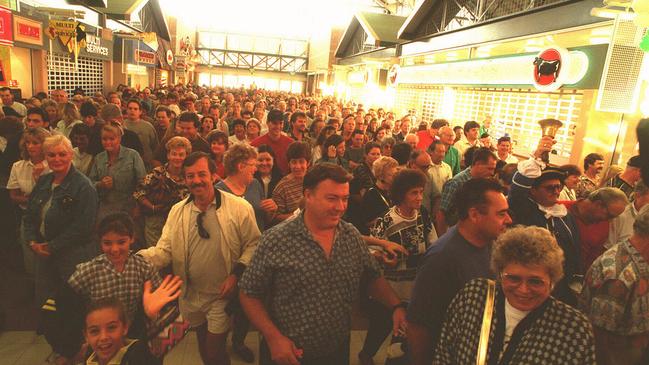
Robina Town Centre opened on April 28, 1996, with Dr Loh in attendance.
More than 100,000 people were expected to attend the opening of the $360m project, with 20,000 alone tipped to line up at the doors for its 8am opening. It was overshadowed by the Port Arthur Massacre that occurred the same day.
By this time, Robina itself was home to just 17,000 people and described as a “satellite town”.
Robina Group capitalised on the centre’s opening by offloading significant parcels of land for what ultimately became the Robina Auto Village.
The area’s golf courses began to take shape, with the Jack Nicklaus-designed Lakelands, Robina Woods and The Glades opening in the 1990s.

The suburb recorded more than $56m in residential land sales.
Despite these successes, Robina had its detractors, including then-Victorian Premier Jeff Kennett who, in 1997, launched a bid to poach Bond University and relocate it to Victoria.
Bond at the time was desperately fighting off a takeover by the University of Queensland, which successfully bid for Bond’s campus at a receiver’s sale.
The bizarre stand-off led Bond vice-chancellor Professor Raoul Mortley to pour cold water on Mr Kennett’s proposal, despite admissions the Borbidge government was making life “as difficult as possible’’.
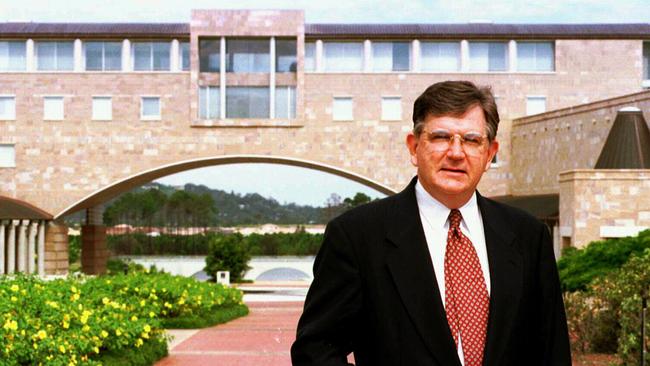
“It’s nice to be wanted by a state government,’’ he said at the time.
“I can’t totally rule it out but it’s 99 per cent certain that we won’t. I don’t think there is any likelihood that the whole entity would be taken by Mr Kennett but certainly the Victorian government seems to be very keen to have us there in some shape or form.”
The proposed move, as well as the takeover bid, were both nixed and the university continued its expansion into the 21st century.
As the 1990s came to a close and the suburb continued to boom, Robina lost one of its founders.
Mr Earle died of cancer in early 1998 at age 84, a little more than a decade after he retired and handed over the reins to Dr Loh.
Next week: Robina’s highs and lows
‘Rocks in your head’: Shock slam against exclusive suburb
EXCLUSIVE housing enclaves, hotels and golf courses – it’s taken more than 40 years for Robina to fulfil its promise.
As the Gold Coast’s first truly planned suburb, it had a profound impact on the city’s future and paved the way for Sanctuary Cove, Pacific Pines, Varsity Lakes and others.
Its future has come into focus in recent weeks as planning continues for the proposed athletes village which will be built to support the 2032 Olympic Games.

In order to avoid the problems surrounding the 2018 Commonwealth Games athletes village, city leaders are calling for the same level of planning that Robina received in the 1980s and 1990s.
For decades, the land which became known as Robina was primarily farm and wetland and considered part of Merrimac.
As the city’s population began to increase in the late 1970s, developers began eyeing locations for future housing and shopping centre projects.
During the early 1960s, developer Intercapital Investments began buying up significant portions of the farmland in anticipation of a land shortage along the coastal strip that would force builders to move west.
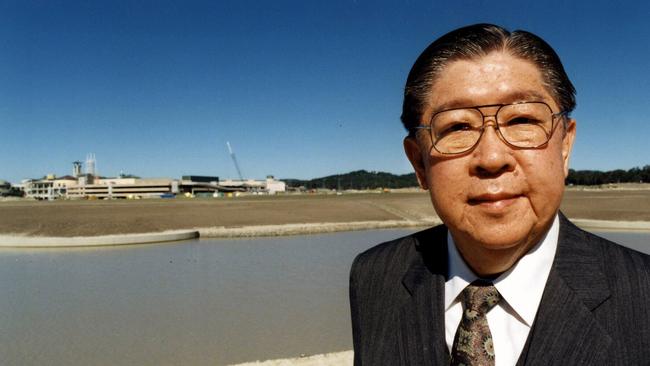
By 1974, when it was bought up by Cambridge Credit, Intercapital had accumulated more than 1600ha.
Cambridge went bust in 1974 and the land passed through a series of buyers who all crashed out in the late 1970s credit squeeze.
Enter Singapore-based developer Dr Robin Loh who in 1980 teamed up with long-established Gold Coast builder Arthur Earle to buy up more than 20sq km of land.
Their joint company, and the suburb they planned to build was named Robina, combining elements of both its founders’ first names.

The original price tag for the suburb was $1.5bn, with construction expected to run until between 1999 and 2004.
It called for a suburb of 50,000 people with man-made lakes and canals, shopping centres, schools and sports facilities.
By early 1984 there were 796 lots brought on to the market, with 363 homes built and 1100 residents.
A year later the suburb was officially gazetted as Robina.
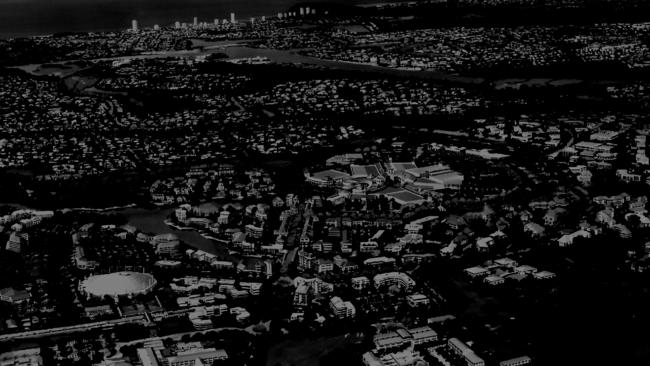
Construction continued at a relatively slow pace through the late 1980s and early 1990s, with the elderly Mr Earle exiting and selling his shares to Dr Loh.
During that time, Bond University, Australia’s first private tertiary institute opened, ushering in another wave of development.
In 1989 the state government gazetted two new suburbs – Clear Island Waters and Kerrydale.
An area east of the land which is today Robina Town Centre, Kerrydale was anticipated to be a high-end suburb with hotels and golf courses.
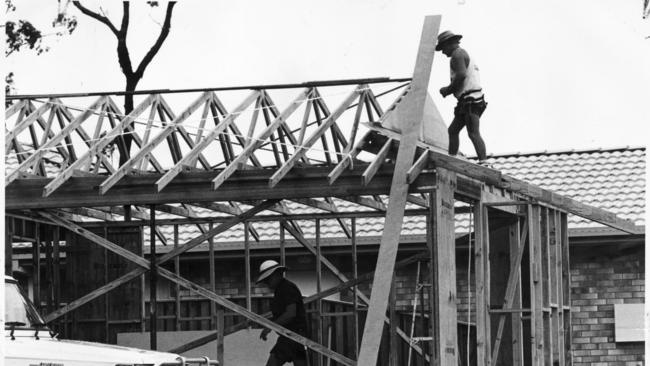
However, within three years it was simply amalgamated into Robina in the state government Act which approved construction of the town centre.
By 1994, when construction finally began on the shopping complex, the area had transformed into one of the Gold Coast’s most exclusive suburbs.
“Today Robina has become one of Australia’s real estate flyers, with prices for choice lots climbing well past $250,000,” News Corp reported in December that year.
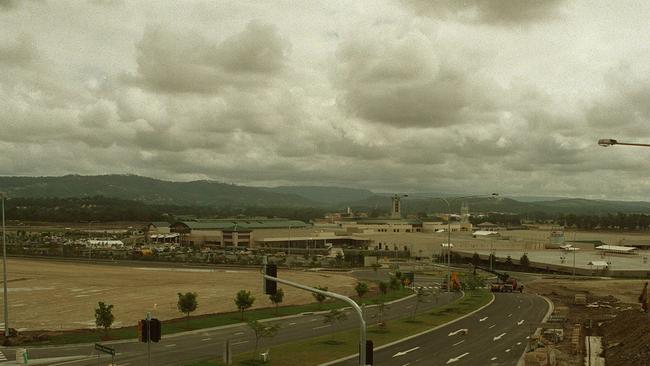
“Already it has a population of 15,000, growing so quickly that maps can’t keep up with the new street names, absorbing many of the 1000 southerners who migrate to Queensland each week.
“The (Robina) group has already set aside an area for a new Gold Coast city centre, bigger than the central business district of Brisbane.
“Already alarm bells are ringing for some of the entrenched commercial interests along the Gold Coast.”

The idea of Robina becoming the Gold Coast’s CBD proved highly controversial to civic leaders in the mid-1990s, a period in which the Gold Coast and Albert Shire councils were in the process of amalgamating, something which saw much of the power within the so-called “super council” move away from the coastal strip and the city’s west.
Southport Chamber of Commerce president Robert Fearnley dismissed the controversy, saying his suburb would always be the city’s business hub.
“There are two major reasons. The government facilities are here, the courthouse, the hospital, and a lot of other government offices,” he said.
Our location near the strip and The Broadwater are just natural features that can’t be taken away.
“While Robina might become the centre of the Gold Coast, the coastal strip will continue to be the hub of the action. It’s like a small-scale Sydney – Parramatta is now geographically its centre, with
an important business district of its own, but if anyone said it’s going to become the Central Business District of Sydney they’d have rocks in their head.’’






